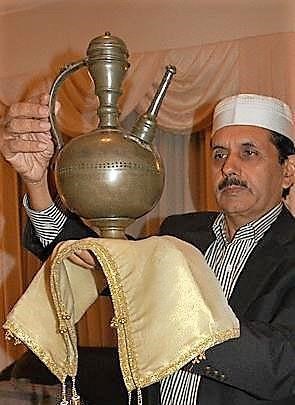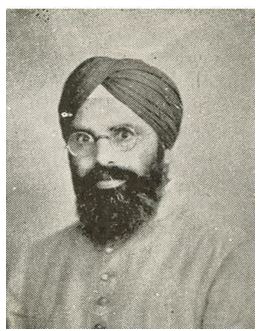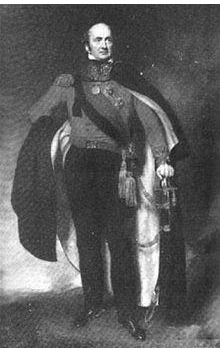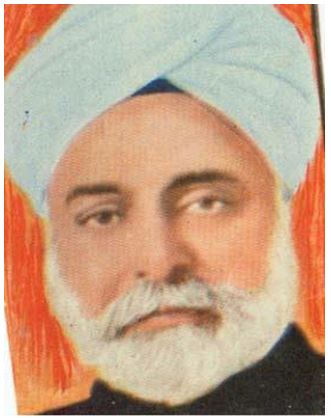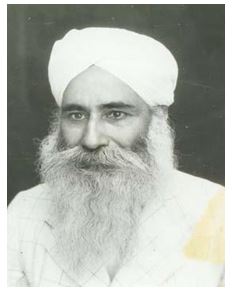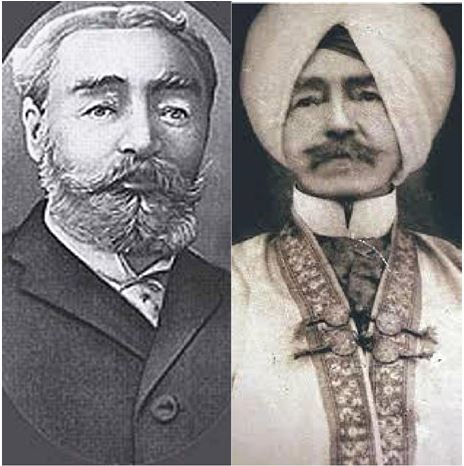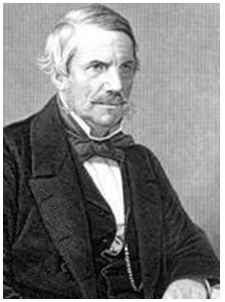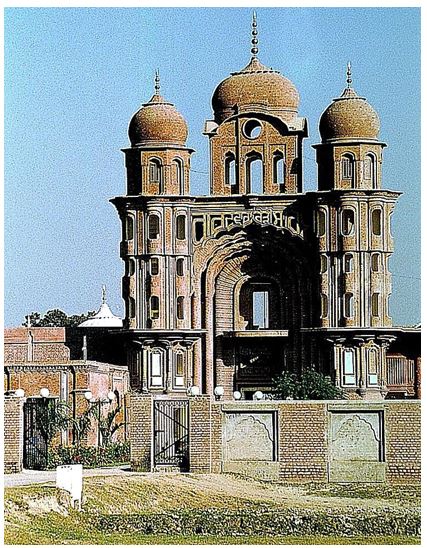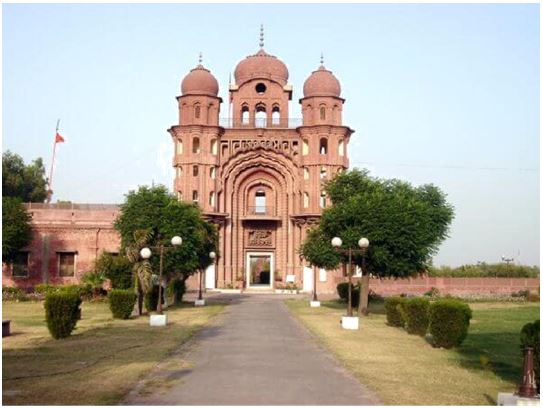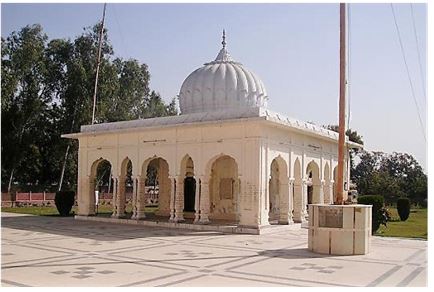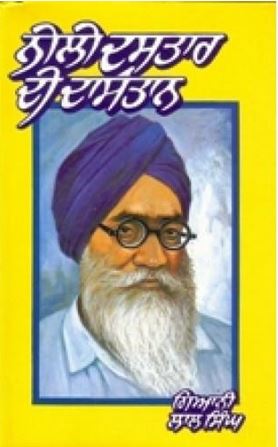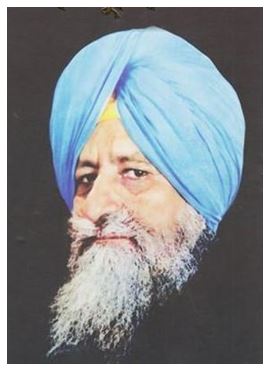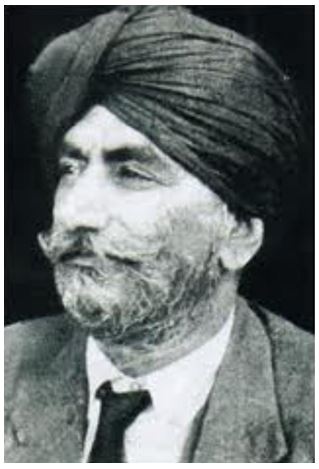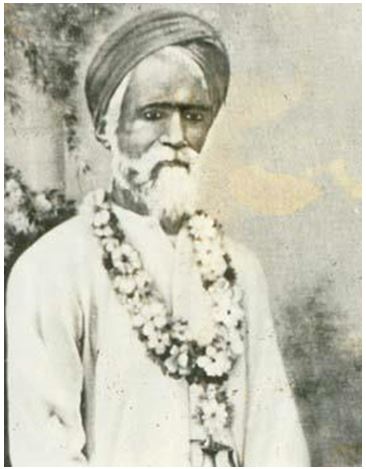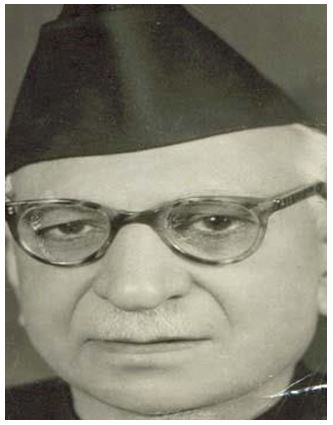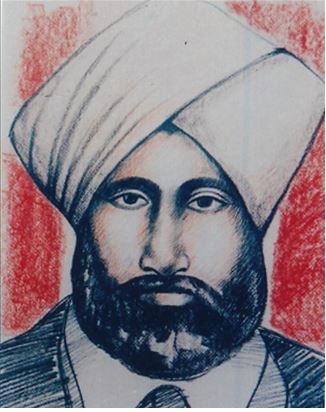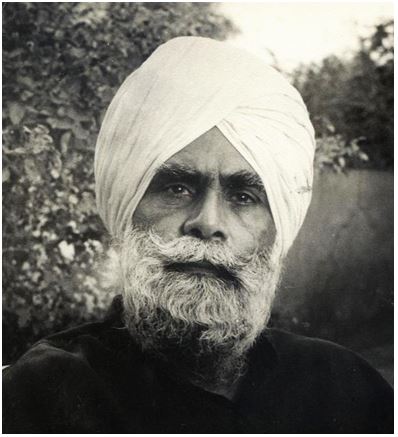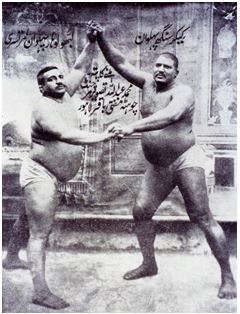Guru Period: Lahore (May 30, 1606): Guru Arjan Sahib.
Ruhila (September 27 to October 3, 1621): Bhai Bihari, Bhai Dhura, Bhai Jattu, Bhai Krishana, Bhai Maluka, Bhai Mandan, Bhai Mathra Bhatt, Bhai Nanu, Bhai Paraga Chhibber, Bhai Saktu, Bhai Sunder etc.
Amritsar (April 13, 1634): Bhai Ballu, Bhai Kirat Bhatt, Bhai Singha Purohit, Bhai Piarana, Bhai Mohan, Bhai Nanda Sanghera, Bhai Nihala, Bhai Nihalu Dhir, Bhai Tiloka, Bhai Tota etc.
Mehraj (December 1634): Bhai Jetha, Bhai Sukha Mandan etc.
Kartarpur (April 27-29, 1635): Bhai Amia, Bhai Fatta, Bhai Kishana, Bhai Lakkhhu, Bhai Madho, Bhai Nathia etc.
Phagwara (April 29, 1635): Bhai Dasa, Bhai Suhela, Bhai Jaggu etc.
Chandani Chowk, Delhi (November 11, 1675): Guru Tegh Bahadur Sahib, Bhai Dial Das, Bhai Mati Das, Bhai Sati Das.
Bhangani (September 18, 1688): Bhai Hathi Chand, Bhai Udia, Bhai Sango Shah, Bhai Jit Mall etc.
Nadaun (March 19, 1691):- Bhai Sohan Chand, Bhai Mul Chand Nijjar etc.
Guler (February 18, 1696): Bhai Sangat Rai, Bhai Lehania, Bhai Hanumant, Bhai Darso etc.
Taragarh (August 29, 1700): Bhai Ishar Singh, Bhai Kalyan Singh, Bhai Sangat Singh (Bhai Pheru) etc.
Fatehgarh (August 30, 1700): Bhai Bhagwan Singh, Bhai Jawahar Singh, Bhai Nand Singh etc.
Agammgarh (August 31, 1700): Bhai Bagh Singh, Bhai Gharbara Singh etc.
Lohgarh (September 1, 1700): Bhai Aalam Singh, Bhai Sukha Singh, Bhai Kushal Singh etc.
Nirmohgarh (October 7, 1700): Bhai Sahib Singh Diwan, Bhai Surat Singh, Bhai Deva Singh, Bhai Mathra Singh, Bhai Anup Singh, Bhai Sarup Singh etc.
Nirmohgarh (October 12, 1700): Bhai Ram Singh, Bhai Himmat Singh, Bhai Mohar Singh, Bhai Sewa Singh etc.
Nirmohgarh (October 13, 1700): Bhai Jita Singh, Bhai Neta Singh etc.
Nirmohgarh (October 14, 1700): Bhai Kesra Singh, Bhai Gokal Singh etc.
Khera-Kalmot (October 19, 1700): Bhai Jiwan Singh.
Shahi Tibbi (December 6, 1705): Bhai Udey Singh and 50 other Sikhs etc.
Sarsa Nadi (December 6, 1705): Bhai Jiwan Singh and 100 other Sikhs etc.
Malakpur Rangharan – Kotla Nihang Khan (December 6-8, 1705): Bhai Bachittar Singh and 100 other Sikhs.
Chamkaur (December 7-8, 1705): See Chalih Muktay.
Muktsar (December 29, 1705): See Chalih Muktay.
BABA BANDA SINGH period (1709 to 1716):
Chappar Chiri, Sirhind (May 12-13, 1710): Bhai Sangram Singh, Bhai Mahboob Singh, Bhai Fateh Singh, Bhai Bajjar Singh and hundreds of the Sikhs.
Sirhind (November 1710): Bhai Sukha Singh, Bhai Lal Singh etc.
Alowal (October 11, 1711): Bhai Jetha Singh Parmar, Bhai Rup Singh Parmar, Bhai Jetha Singh Chauhan, Bhai Keso Singh, Bhai Hari Singh, Bhai Desa Singh, Bhai Narbad Singh, Bhai Tara Singh, Bhai Sewa Singh, Bhai Deva Singh, Bhai Parsan Singh, Bhai Anup Singh, Bhai Kehar Singh, Bhai Channan Singh and 26 other Sikhs (were buried alive).
Bilaspur (December 28, 1711): Bhai Keso Singh, Bhai Bhag Singh etc.
Sadhaura (June 22, 1713): Bhai Saina Singh, Bhai Mohar Singh, Bhai Albel Singh etc.
Gurdas Nangal (1715-16): Binod Singh etc.
Delhi (June 1716): Baba Banda Singh, Bhai Bhagwant Singh, Bhai Kanwar Singh, Bhai Baj Singh, Bhai Sham Singh, Bhai Albel Singh, Bhai Mohar Singh, Bhai Ram Singh, Bhai Gulab Singh, Bhai Ali Singh, Bhai Mali Singh, and more than 700 others.
MISLs period: Dal-Waan (June 9, 1726): Bhai Tara Singh Dal-Waan etc.
Lahore (June 24, 1734): Bhai Mani Singh, Bhai Jagat Singh, Bhai Chitar Singh, Bhai Gurbakhsh Singh, Bhai Aalam Singh, Bhai Gulzar Singh, Bhai Ran Singh, Bhai Sangat Singh, Bibi Basant Kaur, Bhai Aalam Singh Udana and several others.
Nur-ud-Din Di Saran (1740): Baba Bota Singh, Baba Garja Singh etc.
Lahore (1.7.1745): Bhai Taru Singh etc.
Lahore (March 10, 1746):- Bhai Subeg Singh, Bhai Shabaz Singh and more than one thousand Sikhs killed by Lakhpat Rai.
Amritsar (November 11, 1757): Baba Dip Singh and thousands others.
Sirhind (March 27, 1758): Bhai Hathu Singh etc.
Amritsar (December 1, 1764): Jathedar Gurbakhsh Singh and 29 other Sikhs.
Others: Bhai Sukha Singh, Bhai Mahtab Singh, Bhai Subeg Singh, Bhai Shabaz Singh, Bhai Haqiqat Rai etc.
SECOND Phase:
Naushehra (March 14, 1823): Akali Phula Singh.
Jamraud (April 10, 1837): Bhai Hari Singh Nalwa.
Sabhraon (February 10, 1846): Sirdar Sham Singh Atariwala etc.
BRITISH period:
Singapore (July 5, 1856): Bhai Maharaj Singh.
Canadian Sikhs:
(September 5, 1914): Bhai Bhag Singh, Bhai Battan Singh. (January 11, 1915): Bhai Mewa Singh Lopoke. (March 16, 1917): Bhai Balwant Singh.
Budge Budge Ghat
(September 26, 1914): Arjun Singh, Bhagat Singh, Bhajan Singh, Channan Singh, Inder Singh (2), Ishar Singh, Kakar Singh, Kehar Singh, Lachhman Singh, Mastu Singh, Narain Singh, Ratan Singh (alias Karam Singh), Rur Singh (2), Sib Singh, Shihan Singh, Tehal Singh.
Ghadr Party:
Aatma Singh, Arjan Singh Khukhrana, Baghel Singh, Bakhshish Singh, Bir Singh, Buta Singh, Chanda Singh Waraich, Channan Singh, Gandha Singh, Harnam Singh (3), Hazara Singh, Inder Singh, Ishar Singh (2), Jagat Singh, Jagat Singh Vinjhal, Jaswant Singh, Jawand Singh, Kala Singh (2), Mathura Singh, Narain Singh, Niranjan Singh, Pala Singh, Prem Singh, Ranga Singh, Rur Singh, Sajjan Singh, Surain Singh (2), Surjan Singh, Uttam Singh, Vir Singh, Waryam Singh, Wasawa Singh
Gurdwara Reform Movement:
Tarn Taran, During January 26, 1921 attack: Bhai Hazara Singh (27.1.1921) and Bhai Hukam Singh (4.2.1921).
Nanakana Sahib (February 20, 1921): Atma Singh, Bachittar Singh, Bachittar Singh (2), Bagga Singh, Bag Singh, Banta Singh, Bela Singh, Bhag Singh, Bhagwan Singh, Budh Singh, Bur Singh, Chanda Singh, Charan Singh, Charan Singh (2), Chet Singh, Dalip Singh, Dal Singh, Darbara Singh, Dasaundha Singh, Dharam Singh, Dhera Singh, Dial Singh, Diwan Singh, Ganda Singh, Ganga Singh, Ghanaiya Singh, Gopal Singh, Gujjar Singh, Gulab Singh, Gurbakhsh Singh, Hari Singh, Hari Singh (2), Harnam Singh, Harnam Singh (2), Hazara Singh, Hira Singh, Hukam Singh, Inder Singh, Inder Singh (2), Ishar Singh, Ishar Singh (2), Ishar Singh (3), Ishar Singh (4), Jagat Singh, Jawala Singh, Jawand Singh, Jetha Singh, Jiwan Singh, Karam Singh, Kehar Singh, Kesar Singh, Kesar Singh (2), Khushal Singh, Kishan Singh, Lachhman Singh, Mangal Singh, Mehnga Singh, Mota Singh, Mula Singh, Nand Singh, Narain Singh, Narain Singh (2), Narain Singh (3), Punjab Singh, Ram Singh, Rur Singh, Samma Singh, Santa Singh, Santa Singh (2), Sewa Singh, Sohan Singh, Sohan Singh (2), Sunder Singh, Sunder Singh (2), Sunder Singh (3), Surain Singh, Surain Singh (2), Tehal Singh, Teja Singh, Thakar Singh, Ujagar Singh, Waryam Singh, Waryam Singh (2), Waryam Singh (3), Waryam Singh (4), Waryam Singh (5) etc. Out of 130 only 87 could be identified.
Guru Da Bagh: (1922): Jathedar Prithipal Singh, Bhai Tara Singh, Bhai Mewa Singh, Bhai Saudagar Singh etc.
Punja Sahib (October 30,1922): Bhai Karam Singh, Bhai Partap Singh.
Jaito: Total number of martyrs=191. (First Jatha) Killed in firing: Achhar Singh, Arjan Singh, Balbir Kaur and her infant child, Bishan Singh, Diwan Singh, Ghulla Singh, Hardit Singh, Hari Singh, Jassa Singh, Kapur Singh, Labh Singh, Magh Singh, Natha Singh, Nikka Singh, Phumman Singh, Phumman Singh (2) Sucha Singh, Sunder Singh (2), Surain Singh, Wadhawa Singh, Waryam Singh and 48 more. Died of torture in prison: Mohinder Singh, Naunihal Singh, Rur Singh, Sunder Singh (2). Died of torture in prison:-(Second Jatha) Arur Singh, Jaswant Singh, Pala Singh, Sajjan Singh, Sampuran Singh, Sarmukh Singh, Uttam Singh. (Third Jatha): Arur Singh, Atma Singh, Bir Singh, Charan Singh, Dalel Singh, Daya Singh, Dharm Singh, Gulab Singh, Hakam Singh, Hari Singh, Inder Singh, Jagat Singh, Jaswant Singh, Kartar Singh, Kishan Singh, Kishan Singh (2), Lehna Singh, Mohinder Singh, Mula Singh, Nanak Singh, Natha Singh, Naunihal Singh, Partap Singh, Phumman Singh, Ram Singh, Sardara Singh, Sunder Singh,Tara Singh, Wasava Singh. (Fourth Jatha): Arjan Singh, Bharam Tor Singh, Dasaundha Singh, Dharam Singh, Dharam Singh, (2), Gopal Singh, Jagat Singh, Hukam Singh, Kapur Singh, Lachhman Singh, Lakha Singh, Niranjan Singh, Satnam Singh, Sucha Singh, Teja Singh, Udham Singh, Uttam Singh. (Fifth Jatha): Arur Singh, Arur Singh (2), Bachan Singh, Bishan Singh, Bishan Singh (2), Chet Singh, Diwan Singh, Fauja Singh, Gopal Singh, Gurbachan Singh, Inder Singh, Jaimal Singh, Jhanda Singh, Kartar Singh, Mangal Singh, Mihan Singh, Ram Singh, Sangat Singh, Sarmukh Singh, Wadhava Singh, Wasava Singh. (Sixth Jatha): Arjan Singh, Hari Singh, Ishar Singh, Nihal Singh, Ranjit Singh, Saudagar Singh, Sobha Singh. (Seventh Jatha): Banta Singh, Banta Singh (2), Bhagat Singh, Bhagat Singh (2), Bhagwan Singh, Charan Singh, Dalel Singh, Dharam Singh, Diwan Singh, Dumman Singh, Harnam Singh, Gopal Singh, Gurmukh Singh, Gurmukh Singh (2), Harnam Singh, Hukam Singh, Inder Singh, Jawala Singh, Jhakhar Singh, Jiwa Singh, Karam Singh, Karam Singh (2), Kartar Singh, Kartar Singh (2), Kharak Singh, Kharak Singh (2), Khushal Singh, Mehman Singh, Mehma Singh, Narata Singh, Tehal Singh. (Eighth Jatha): Asa Singh, Gajjan Singh, Gopal Singh, Gurnam Singh, Harnam Singh, Jiwan Singh, Milkha Singh, Mul Singh, Partap Singh, Piara Singh, Prem Singh, Sangat Singh, Tara Singh. (Ninth Jatha): Bahadur Singh, Bawa Singh, Bhagat Singh, Gurdit Singh, Hazara Singh, Karam Singh, Kartar Singh, Mohan Singh, Ram Singh, Ram Singh (2), Sohan Singh, Wadhava Singh. (Tenth Jatha): Dalip Singh, Ganga Singh, Hira Singh, Jiwan Singh, Ujagar Singh. (Eleventh Jatha): Basant Singh, Chanan Singh, Hari Singh, Harnam Singh, Milkha Singh, Ratan Singh, Sobha Singh, Tara Singh. (Twelfth Jatha): Arur Singh, Dharam Singh, Pala Singh, Sajjan Singh, Sampuran Singh. (Thirteenth Jatha): Bela Singh, Gurbachan Singh, Hari Singh, Rachhpal Singh, Saudagar Singh. (Fourteenth Jatha): Dhera Singh, Narayan Singh, Sukha Singh.
Bhai Pheru:- Bhai Arjan Singh, Bhai Hari Singh etc.
Babar Akali Movement (September 1, 1923): Bhai Karam Singh Editor, Bhai Bishan Singh, Bhai Mohinder Singh. (October 25, 1923): Bhai Dhanna Singh. (December 12, 1923): Bhai Banta Singh Dhamian, Bhai Jawala Singh. (June 8, 1924): Bhai Waryam Singh Dhugga. (February 27, 1926): Bhai Kishan Singh Gargajj, Bhai Babu Santa Singh, Bhai Dalip Singh Dhamian, Bhai Karam Singh Manko, Bhai Dharam Singh, Bhai Nand Singh. Bhai Harbans Singh Sarhala Kalan (April 3,1946).
(Other dates): Bhai Karam Singh Jhingar, Bhai Dalip Singh, Bhai Surjan Singh Hazratpur, Bhai Partap Singh, Bhai Munsha Singh etc.
PEPSU:- Bhai Chuhar Singh etc.
PUNJABI SUBA:-
Delhi (June 12, 1960): Bhai Harbans Singh etc.
Karnal (September 21, 1960): Kaka Inderjit Singh.
Bathinda Jail (October 9, 1960): Bhai Chainchal Singh, Bhai Ranjit Singh, Nazar Singh, Jaswant Singh.
Amritsar (October 29, 1969): Jathedar Darshan Singh Pheruman.
Amritsar (April 13, 1978): Bhai Fauja Singh, Baba Darshan Singh, Bhai Amrik Singh, Bhai Awtar Singh, Bhai Dharambir Singh, Bhai Gurcharan Singh, Bhai Gurdial Singh, Bhai Harbhajan Singh, Bhai Kewal Singh, Bhai Piara Singh, Bhai Raghbir Singh, Bhai Ranbir Singh, Giani Hari Singh.
Kanpur (September 1978): Bhai Balwant Singh, Bhai Gurjit Singh, Bhai Harcharan Singh Chawla, Bhai Jagjit Singh, Bhai Kashmira Singh, Bhai Kishan Singh Chanana, Bhai Manmohan Singh Chawla, Bibi Darshan Kaur.
Delhi (November 5, 1978): Jathedar Awtar Singh Kohli, Bhai Gobind Singh, Bhai Maninder Singh.
(Dr Harjinder Singh Dilgeer)
